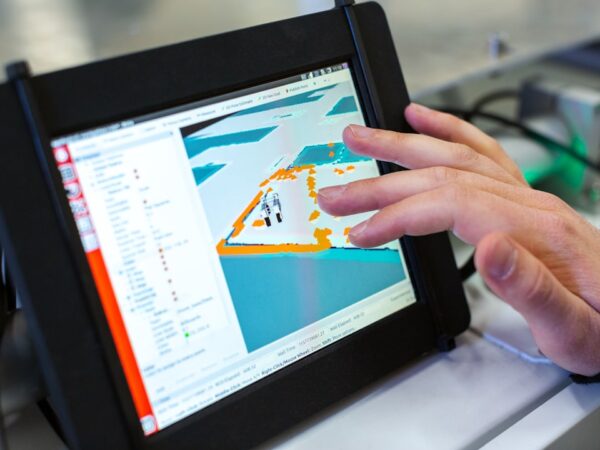
The Top Imposition Software for Streamlined Digital Printing Workflows
Imposition software plays a crucial role in digital printing workflows. It is a tool that helps arrange and organize pages in a way that optimizes printing efficiency and minimizes waste. In simple terms, imposition software takes the individual pages of a document and arranges them in the correct order and orientation for printing and binding.
In the past, imposition was a manual process that required skilled operators to physically arrange the pages on a printing press. However, with the advent of digital printing technology, imposition software has become an essential tool for automating this process.
Key Takeaways
- Imposition software is a tool used in digital printing workflows to arrange and optimize the layout of pages for printing.
- Benefits of using imposition software include increased efficiency, reduced waste, and improved print quality.
- Essential features to look for in imposition software include automation, customization options, and compatibility with various file formats.
- Top imposition software for digital printing workflows in 2021 include Adobe InDesign, Quite Imposing Plus, and Ultimate Impostrip.
- Comparison of different imposition software solutions can help determine which one is best suited for specific printing needs.
- Imposition software is also available for large format, variable data, booklet, and packaging printing workflows.
- Choosing the right imposition software for your digital printing workflow requires considering factors such as budget, printing volume, and specific needs.
Benefits of Using Imposition Software in Digital Printing Workflows
1. Increased efficiency and productivity: One of the primary benefits of using imposition software is the significant increase in efficiency and productivity it brings to digital printing workflows. By automating the imposition process, operators can save valuable time and resources that would otherwise be spent on manual page arrangement.
2. Reduced waste and costs: Imposition software helps minimize waste by optimizing the placement of pages on a sheet, reducing the number of sheets needed for printing. This not only saves money on paper and ink but also reduces the environmental impact of printing.
3. Improved accuracy and consistency: Manual imposition can be prone to human error, resulting in misaligned pages or incorrect page order. Imposition software eliminates these errors by automatically arranging pages according to predefined templates or custom settings, ensuring accurate and consistent results every time.
4. Enhanced creativity and flexibility: Imposition software offers a wide range of layout templates and customization options, allowing designers to experiment with different page arrangements and formats. This flexibility opens up new possibilities for creative expression and enables the production of unique and visually appealing printed materials.
Essential Features to Look for in Imposition Software
When choosing an imposition software for your digital printing workflow, there are several essential features to consider:
1. Layout templates and customization options: Look for software that offers a variety of pre-designed layout templates for common printing formats, such as booklets, brochures, and posters. Additionally, the software should allow for customization, enabling you to create your own unique layouts.
2. Automatic page numbering and bleed settings: Page numbering is an important aspect of printed materials, and imposition software should have the ability to automatically add page numbers to the imposed pages. Additionally, the software should have options for setting bleed areas to ensure that images and graphics extend beyond the trim edge, allowing for accurate trimming.
3. Crop marks and registration marks: Crop marks indicate where the printed material should be trimmed, while registration marks help align the different colors in a multi-color print job. Imposition software should have the ability to add these marks automatically to the imposed pages.
4. Color management and proofing tools: Color accuracy is crucial in digital printing, and imposition software should have robust color management capabilities. Look for software that allows you to preview and proof the imposed pages before printing, ensuring that colors are reproduced accurately.
5. Integration with other software and hardware: Imposition software should seamlessly integrate with other software and hardware in your digital printing workflow. This includes compatibility with design software like Adobe InDesign or QuarkXPress, as well as integration with RIP (Raster Image Processor) software and cutting machines.
Top Imposition Software for Digital Printing Workflows in 2021
| Software Name | Supported Platforms | Features | Price |
|---|---|---|---|
| Ultimate Impostrip® | Windows, Mac, Linux | Automated imposition, JDF integration, gang run support | 2,500 – 10,000 |
| Quite Imposing Plus | Windows, Mac | Manual and automated imposition, booklet making, crop marks | 1,000 – 2,000 |
| Montax Imposer | Windows, Mac | Automated imposition, JDF integration, booklet making | 300 – 1,000 |
| Tilia Phoenix | Windows, Mac | Automated imposition, JDF integration, gang run support | Custom pricing |
| Preps | Windows, Mac | Manual and automated imposition, JDF integration, gang run support | Custom pricing |
There are several imposition software solutions available in the market today. Here are some of the top options for digital printing workflows in 2021:
1. Adobe InDesign: Adobe InDesign is a popular design software that also offers powerful imposition features. It allows users to create custom layouts, add crop marks and registration marks, and export imposed pages for printing.
2. Quite Imposing Plus: Quite Imposing Plus is a standalone imposition software that offers a wide range of features for digital printing workflows. It supports both manual and automatic imposition, and includes advanced features like step-and-repeat, booklet imposition, and n-up imposition.
3. Ultimate Impostrip: Ultimate Impostrip is a comprehensive imposition software that caters to the needs of both small and large printing companies. It offers a wide range of imposition options, including step-and-repeat, booklet imposition, and gang run imposition.
4. Tilia Labs Phoenix: Tilia Labs Phoenix is a cloud-based imposition software that offers advanced automation and optimization features. It uses artificial intelligence algorithms to analyze print jobs and optimize the imposition for maximum efficiency and cost savings.
5. Dynagram DynaStrip: Dynagram DynaStrip is a powerful imposition software that offers a wide range of features for digital printing workflows. It supports both manual and automatic imposition, and includes advanced features like dynamic marks, barcodes, and variable data printing.
Comparison of Different Imposition Software Solutions
When choosing an imposition software for your digital printing workflow, it’s important to compare different solutions based on various factors:
1. Pricing and licensing options: Consider the cost of the software and the licensing options available. Some software may require a one-time purchase, while others may offer subscription-based pricing.
2. User interface and ease of use: Evaluate the user interface of the software and consider how easy it is to navigate and use. Look for software that offers a intuitive interface and provides helpful documentation or tutorials.
3. Compatibility with different file formats and printers: Ensure that the software is compatible with the file formats you commonly work with, such as PDF or Adobe InDesign files. Additionally, check if the software supports the printers or printing devices you use in your workflow.
4. Advanced features and customization options: Consider the advanced features offered by the software, such as support for variable data printing or integration with CRM (Customer Relationship Management) software. Additionally, look for customization options that allow you to tailor the imposition process to your specific needs.
5. Customer support and training resources: Evaluate the level of customer support provided by the software vendor. Look for software that offers responsive customer support and provides training resources, such as tutorials or user forums.
Imposition Software for Large Format Printing Workflows

Large format printing presents unique challenges and opportunities in imposition. Imposition software for large format printing workflows needs to take into account factors such as scaling, tiling, and nesting.
Scaling: Large format printing often involves scaling up smaller designs to fit larger print sizes. Imposition software should have the ability to scale designs while maintaining their aspect ratio and resolution.
Tiling: Tiling is the process of dividing a large design into smaller sections that can be printed separately and then assembled to create the final output. Imposition software should have features that allow for easy tiling, including automatic placement of overlap areas and alignment marks.
Nesting: Nesting is the process of arranging multiple designs on a single sheet to minimize waste and maximize efficiency. Imposition software for large format printing should have advanced nesting algorithms that optimize the placement of designs on the sheet, taking into account factors such as size, shape, and color.
Integration with RIP software and cutting machines: Large format printing often involves RIP software for processing print files and cutting machines for trimming or contour cutting. Imposition software should seamlessly integrate with these tools to ensure a smooth workflow from design to final output.
Imposition Software for Variable Data Printing Workflows
Variable data printing (VDP) is a printing technique that allows for the customization of printed materials with personalized information. Imposition software for VDP workflows needs to handle the unique requirements of variable data, such as dynamic page numbering and variable content placement.
Dynamic page numbering: In VDP workflows, each printed piece may have a different number of pages depending on the personalized content. Imposition software should have the ability to dynamically adjust page numbering based on the content being printed.
Variable content placement: VDP often involves placing variable content, such as names or addresses, in specific areas of the printed piece. Imposition software should have features that allow for the precise placement of variable content, ensuring that it aligns correctly with the rest of the design.
Integration with data management and CRM software: VDP workflows often require integration with data management and CRM software to retrieve and process personalized information. Imposition software should seamlessly integrate with these tools to ensure a smooth workflow from data management to final output.
Imposition Software for Booklet Printing Workflows
Booklet printing involves the production of multi-page documents that are folded and bound together. Imposition software for booklet printing workflows needs to handle the unique requirements of different binding methods, such as saddle-stitching, perfect binding, and coil binding.
Saddle-stitching: Saddle-stitching is a common binding method for booklets where folded sheets are stapled together along the fold line. Imposition software should have features that allow for easy imposition of saddle-stitched booklets, including automatic placement of pages and alignment marks.
Perfect binding: Perfect binding is a binding method where pages are glued together along the spine. Imposition software should have features that allow for easy imposition of perfect-bound booklets, including automatic placement of pages and spine width adjustment.
Coil binding: Coil binding is a binding method where pages are punched with holes and then bound together using a plastic coil. Imposition software should have features that allow for easy imposition of coil-bound booklets, including automatic placement of pages and hole punching options.
Integration with prepress and finishing equipment: Booklet printing often involves prepress processes such as imposition, color management, and proofing, as well as finishing processes such as trimming and folding. Imposition software should seamlessly integrate with prepress and finishing equipment to ensure a smooth workflow from design to final output.
Imposition Software for Packaging Printing Workflows
Packaging printing involves the production of various types of packaging materials, such as folding cartons, labels, and flexible packaging. Imposition software for packaging printing workflows needs to handle the unique requirements of different packaging types, including die-cutting and folding.
Folding cartons: Folding cartons are used for packaging products such as food, cosmetics, and pharmaceuticals. Imposition software for folding cartons needs to have features that allow for easy imposition of carton layouts, including automatic placement of panels and fold lines.
Labels: Labels are used for product identification and branding. Imposition software for labels needs to have features that allow for easy imposition of label layouts, including automatic placement of labels on a sheet and alignment marks.
Flexible packaging: Flexible packaging includes materials such as pouches, bags, and wrappers. Imposition software for flexible packaging needs to have features that allow for easy imposition of flexible packaging layouts, including automatic placement of designs on a roll or sheet and registration marks.
Integration with CAD software and die-cutting machines: Packaging printing often involves CAD (Computer-Aided Design) software for creating die-cut templates and die-cutting machines for cutting out the packaging shapes. Imposition software should seamlessly integrate with CAD software and die-cutting machines to ensure a smooth workflow from design to final output.
Choosing the Right Imposition Software for Your Digital Printing Workflow
When choosing an imposition software for your digital printing workflow, consider the following factors:
1. Factors to consider when selecting imposition software: Consider your specific requirements, such as the types of printing jobs you handle, the level of automation you need, and the integration with other software and hardware in your workflow.
2. Tips for evaluating and testing different solutions: Take advantage of free trials or demos offered by imposition software vendors to evaluate their features and functionality. Test the software with your own files and workflows to see how well it performs in real-world scenarios.
3. Best practices for implementing and optimizing imposition software in your workflow: Once you have selected an imposition software, take the time to learn its features and capabilities. Train your staff on how to use the software effectively and integrate it into your existing workflow. Continuously evaluate and optimize your imposition process to maximize efficiency and productivity.
In conclusion, imposition software is a crucial tool in digital printing workflows. It offers numerous benefits, including increased efficiency, reduced waste, improved accuracy, and enhanced creativity. When choosing an imposition software, consider essential features such as layout templates, automatic page numbering, crop marks, color management, and integration capabilities. There are several top imposition software solutions available in the market, each with its own strengths and features. Compare different solutions based on factors such as pricing, user interface, compatibility, advanced features, and customer support. Additionally, consider the unique requirements of specific printing workflows, such as large format printing, variable data printing, booklet printing, and packaging printing. By choosing the right imposition software and implementing it effectively in your workflow, you can streamline your printing process and achieve optimal results.
FAQs
What is imposition software?
Imposition software is a tool used in the printing industry to arrange pages or images in a specific order for printing.
What are the benefits of using imposition software?
Using imposition software can help reduce printing costs, increase efficiency, and improve the overall quality of the printed product.
What are some popular imposition software options for digital printing?
Some popular imposition software options for digital printing include Quite Imposing Plus, Ultimate Impostrip, and Inposition.
What features should I look for in an imposition software?
When choosing an imposition software, look for features such as automatic imposition, support for multiple file formats, and the ability to customize layouts.
Can imposition software be used for both offset and digital printing?
Yes, imposition software can be used for both offset and digital printing.
Is imposition software easy to use?
The ease of use of imposition software varies depending on the specific software and the user’s experience with it. However, many imposition software options offer user-friendly interfaces and tutorials to help users get started.


















